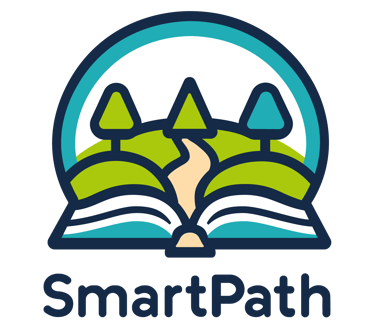Not Sure What Type of Homeschooler You Are? That’s Okay.
A Practical Look at the Types of Homeschooling (And Why You Don’t Need to Pick Just One)


Start Googling “how to homeschool,” and you’ll quickly land in a maze of categories: Charlotte Mason, Classical, Unschooling, Montessori... It can feel like you’re supposed to pick a team before you even know the rules
But real homeschooling doesn’t usually work that way.
Most families aren’t trying to pledge allegiance to an educational philosophy. They’re trying to figure out how to make learning work around jobs, siblings, kids with different needs, and life. So while the categories can be helpful to explore, they shouldn’t box you in.
This article isn’t about choosing a type. It’s about helping you notice what works for your family and giving you permission to blend, bend, and build your own rhythm.
What Parents Are Really Asking
When families start homeschooling, they’re usually not asking for a label.
They’re asking questions like:
What should our day look like?
How do I know what to teach and when?
How much structure is too much, or not enough?
How do I handle different age groups simultaneously?
Is it okay to try something and then change our minds?
These are real questions. And the answers don’t come from picking the “right” homeschool type. They come from knowing your child, trusting yourself, and learning as you go.
A Clearer Way to Think About Homeschooling Styles
Instead of diving into jargon, here’s a plain-spoken breakdown of the most common approaches, what they feel like, who they might work for, and where they sometimes fall short.
🧭 The Structured Starter
(Also known as: Traditional / School-at-Home)
This style mimics the routine of a typical school day: a set schedule, grade-level textbooks, worksheets, and tests.
A good fit for families new to homeschooling who want a clear plan to follow. It’s also helpful for parents who are balancing work and homeschooling and need predictability.
Watch out for burnout. Kids (and parents) may find it tiring to replicate school at home, especially if the reason you left school was for more freedom or flexibility.
📚 The Thinker’s Track
(Also known as: Classical Education)
This approach emphasizes deep thinking, memorization, and logic, typically through a three-stage model known as the Trivium, comprising grammar, logic, and rhetoric. It draws on time-tested materials like great books, Socratic discussion, Latin, and formal logic.
A good fit for kids who enjoy reading, language, and structured thinking. It’s often used by families who value traditional academic rigor.
Watch out for burnout or rigidity. Classical programs can be demanding and may not suit every learning style. Some children find the structure motivating, while others may feel stifled or anxious due to too much emphasis on memorization and formal exercises.
Like all methods, many families blend classical elements with other approaches, retaining the richness while softening the rigor when needed.
🍃 The Gentle Guide
(Also known as: Charlotte Mason)
This style emphasizes living books (as opposed to textbooks), time spent in nature, brief lessons, and the cultivation of good habits.
A good fit for families who want a peaceful, literature-rich environment with ample outdoor learning opportunities.
Watch out for pacing. This method is gentle, but some parents may worry it’s not “enough,” especially if they’re coming from a more rigid system.
🧩 The Independent Explorer
(Montessori-Inspired Homeschooling)
Rooted in hands-on, self-directed learning, this approach focuses on real-life tasks and provides freedom within a structured framework.
A good fit for younger children, kids who learn best through hands-on activities, and families who value independence and life skills.
Watch out for the setup. This method often relies on specialized materials or environments, which can be expensive or impractical to obtain at home.
🌊 The Freedom Flow
(Unschooling)
This is the most unstructured approach, no set curriculum, just following the child’s interests and letting learning happen naturally through life experiences.
A good fit for families who believe children learn best when they direct their own education, and who are comfortable with uncertainty and trust.
Watch out for outside judgment. Even confident unschoolers often hear questions like “But are they learning anything?” Trust and observation are key.
🎨 The Project Path
(Unit Studies)
With this approach, families build lessons around themes – like space, gardening, or ancient Egypt – incorporating reading, science, history, and art into one unit.
A good fit for curious learners and families with multiple children. It’s great for hands-on and creative projects.
Watch out for planning time. Unit studies can be rich and exciting, but they take effort to organize if you’re not using a pre-made resource.
🧠 The Custom Combo
(Eclectic Style)
This is what most homeschoolers eventually become. It’s a mix-and-match method based on what works, using a structured math program, interest-led science, maybe a Charlotte Mason-inspired reading plan.
A good fit for pretty much everyone.
Watch out for decision fatigue. With freedom comes the need to make more choices. Having support or tools to help you filter options can make a big difference.
How to Build a Style That Works for You
You don’t need to choose a method and stick with it forever. You can start structured in the morning and transition to an interest-led approach in the afternoon. You can follow a math curriculum, but let your child write poetry in the backyard.
Ask yourself:
What excites my child? What drains them?
What feels sustainable for me as a parent?
Are we doing this because it works, or because it’s what we think we should do?
Your homeschool doesn’t need a title. It needs a rhythm that helps your child grow and gives you space to grow alongside them.
You Don’t Need a Label. You Need a Launch Point.
The most successful homeschoolers aren’t the ones who picked the “perfect” method. They’re the ones who stayed open, experimented, and kept paying attention to what was working (and what wasn’t).
So if you're still figuring out your homeschool style, you're not behind. You're doing it exactly right.
Pick what works. Drop what doesn’t. Adjust as you go. And above all, keep listening to your child, and to yourself.
Ready to explore what might work for your family?
Our updated Curriculum Matcher can help you get started. It asks a few thoughtful questions about your child, your lifestyle, and your ideal day, then shows you curriculum options that actually fit, helping you understand your ideal style.
